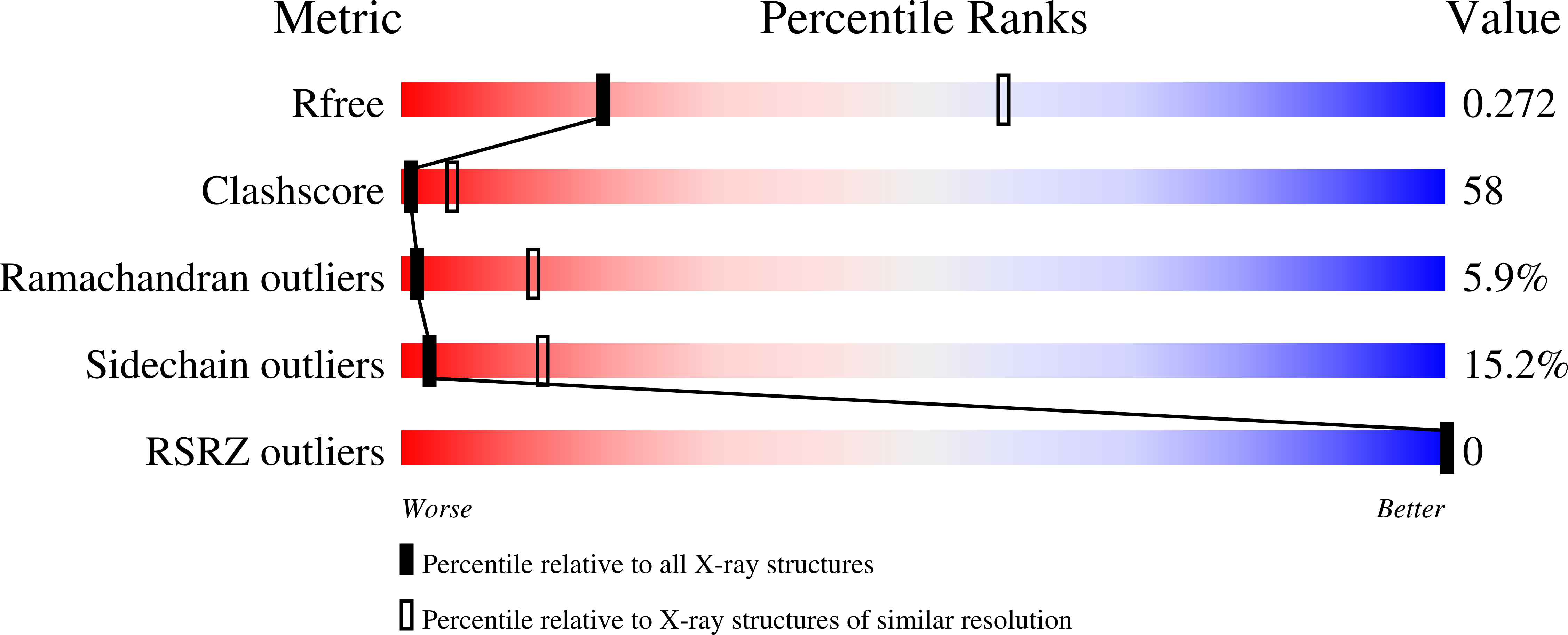Functional aspects of the heme bound hemophore HasA by structural analysis of various crystal forms.
Arnoux, P., Haser, R., Izadi-Pruneyre, N., Lecroisey, A., Czjzek, M.(2000) Proteins 41: 202-210
- PubMed: 10966573
- DOI: https://doi.org/10.1002/1097-0134(20001101)41:2<202::aid-prot50>3.0.co;2-8
- Primary Citation of Related Structures:
1DK0, 1DKH - PubMed Abstract:
The protein HasA from the Gram negative bacteria Serratia marcescens is the first hemophore to be described at the molecular level. It participates to the shuttling of heme from hemoglobin to the outer membrane receptor HasR, which in turn releases it into the bacterium. HasR alone is also able to take up heme from hemoglobin but synergy with HasA increases the efficiency of the system by a factor of about 100. This iron acquisition system allows the bacteria to survive with hemoglobin as the sole iron source. Here we report the structures of a new crystal form of HasA diffracting up to 1.77A resolution as well as the refined structure of the trigonal crystal form diffracting to 3.2A resolution. The crystal structure of HasA at high resolution shows two possible orientations of the heme within the heme-binding pocket, which probably are functionally involved in the heme-iron acquisition process. The detailed analysis of the three known structures reveals the molecular basis regulating the relative affinity of the heme/hemophore complex.
Organizational Affiliation:
Laboratoire d'Architecture et Fonction des Macromolécules Biologiques, Institut de Biologie Structurale et Microbiologie, Marseille, France.

















